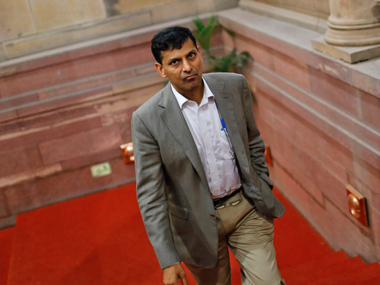One of the questions repeatedly posed to Reserve Bank of India (RBI) governor, Raghuram Rajan, on Tuesday was the fate of the ongoing bad loan clean-up process in the banking system post his exit in September. To a question on whether the RBI is satisfied with the way banks have been disclosing their Non-performing assets (NPAs) so far, Rajan said the central bank is indeed comfortable with the progress. “Broadly speaking, we are comfortable with the recognition process that banks have certainly taken. Some banks have taken more steps than we required them to take. So, the culture of cleaning up (of balance sheet) seems to be well embedded as well as a culture of recovery on some of the loans,” Rajan said in the post monetary policy press conference. [caption id=“attachment_2784936” align=“alignleft” width=“380”]  RBI Governor Raghuram Rajan. Reuters[/caption] The bad loan clean-up exercise that began in the second half of last financial year has resulted in public sector banks (PSBs) alone declaring over Rs 2 lakh crore bad loans in the banking system. Presently the total bad loan stock (gross non-performing assets (GNPAs)) in the banking sector stand at Rs 6 lakh crore, of which public sector banks have a share of Rs 5.4 lakh crore. In percentage terms, the gross NPAs of the scheduled commercial banks have risen from 5.43 percent in March 2015 to 9.32 percent in March 2016. The RBI has set a deadline of March 2017 for banks to disclose all their bad loans, including the ones masqueraded as restructured loans. Much before that, Rajan had put in place a mechanism for early-recognition of bad assets. Rajan’s exercise made immense sense since a bad loan bomb was building in the banking system and no one knew the exact size of its until then since banks were smartly hiding much of it in the rejigged loan basket. Rajan’s call was politically sensitive too since it meant huge additional capital implications for the government that owns 70 percent of the banking system through state-run banks. But, if Rajan’s ‘Swachh Banks’ mission wouldn’t have happened, this bomb would have exploded at some stage. Majority of the bank loan NPAs on the books of state run banks emerge from loans given to large corporations. According to latest government data, top 100 borrowers of PSBs owe nearly Rs 14 lakh crore to them. Of this the share of wilful defaulters as a percentage of GNPAs as on March 2016 was 16.09 per cent. Going by the last Financial Stability Report (FSR) of RBI, the bad loan clean-up process has worked well so far, with banks being forced to classify a large chunk of the restructured assets as bad loans. The restructured assets of banks fell to 3.9 percent at the end of March quarter from 6.2 per cent in September. In other words, what this essentially means is that most of the restructured loans have been shifted to the NPA book, finally. This gives hope that the era of merrily masquerading bad loans as restructured loans will soon be a thing of the past. The reason for marginal increase in total stressed asset levels despite sharp rise in NPAs is the simultaneous sharp decline in restructured loans. Will the central bank continue with the bad loan clean-up exercise post Rajan’s exit? The answer to this will depend on Rajan’s successor. If the new governor stands up strongly to continue with the task and clear the puzzle of the hidden NPAs that will be seen as a major reform in the country’s banking sector. Instead, if the new governor buckles under the pressure of the corporate lobby and go slow on the process, the progress made so far will get eroded. The whole exercise also means huge capital implications for the government, the majority owner of state-run banks, since the onus of capitalizing these lenders is with the central exchequer. All eyes will be on Rajan’s successor now. Data contributed by Kishor Kadam
One of the questions repeatedly posed to Reserve Bank of India (RBI) governor, Raghuram Rajan, on Tuesday was the fate of the ongoing bad loan clean-up process in the banking system post his exit in September
Advertisement
End of Article


)

)
)
)
)
)
)
)
)



